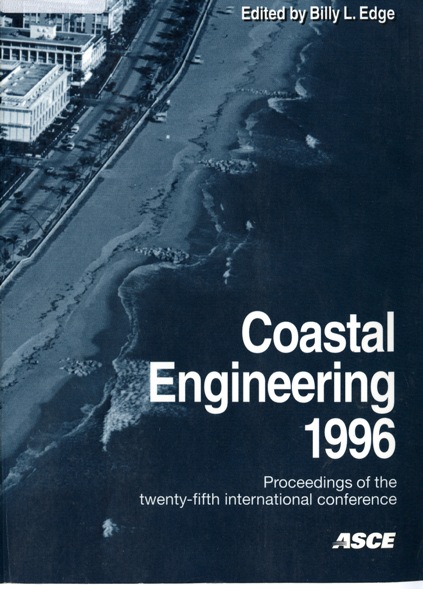Abstract
A computational model is developed for depth-averaged cross-shore and longshore currents which includes the effects of the surface roller generated by wave breaking. The creation and evolution of the roller itself is modeled explicitly (Dally and Brown, 1995), and convective acceleration terms are included in both the crossshore and longshore momentum equations. Lateral mixing is parameterized in terms of the local cross-shore current and a turbulent eddy viscosity, as proposed by Svendsen and Putrevu (1994); however, a new model for eddy viscosity is proposed which contains contributions from both the roller-induced and bed-induced turbulence. The laboratory measurements of quasi-uniform longshore currents reported by Visser (1991) are used to calibrate and verify the model. For driving the model, it is shown that using stream function wave theory produces significantly better results than linear wave theory. Also, comparisons of longshore current distributions with and without the roller terms included show that the roller plays an essential role in faithfully modeling the longshore current. The calibrated model also produces accurate results for the set-up/set-down using stream function theory, for the limited data available from Visser (1991).
Authors retain copyright and grant the Proceedings right of first publication with the work simultaneously licensed under a Creative Commons Attribution License that allows others to share the work with an acknowledgement of the work's authorship and initial publication in this Proceedings.

